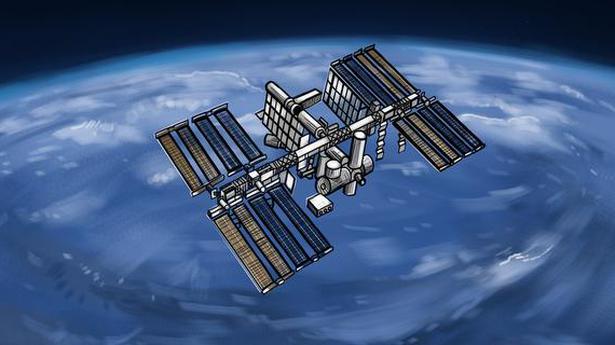MoreBack to News Headlines
International Space Station | A space for science, experiments and unity
The Hindu
Global cooperation in space research faces challenges with Russia considering leaving the ISS and launching its own station
The International Space Station (ISS) is a landmark of international cooperation. For over 20 years, it has seen intense collaboration between the U.S., Russia, the EU, Japan and Canada, and has played host to people from 19 countries since its launch in 1998. This scenario appears to be coming to an end, as Russian space agency Roscosmos’s chief has declared that Russia is ready to build its own space station and launch it by 2030 if President Vladimir Putin would give the go ahead. Further, in an interview to Russian TV, Deputy Prime minister Yuri Borisov said Russia would give notice and leave the ISS by 2025. The idea of the ISS was born in 1984 when Ronald Reagan, then the US President, announced it in a State of the Union address. “Our progress in space, taking giant steps for all mankind, is a tribute to American teamwork and excellence. Our finest minds in government, industry and academia have all pulled together. And we can be proud to say: We are first; we are the best; and we are so because we're free,” he said. In his speech, he outlined the idea of international cooperation in this venture, as he announced: “A space station will permit quantum leaps in our research in science, communications, and in metals and lifesaving medicines which could be manufactured only in space. We want our friends to help us meet these challenges and share in their benefits. NASA will invite other countries to participate so we can strengthen peace, build prosperity, and expand freedom for all who share our goals.” Since then, the ISS project saw a collaboration grow between several countries, mainly the following space agencies: NASA (U.S.), Roscosmos (Russia), ESA (Europe), JAXA (Japan) and CSA (Canada). Though the programme began in 1993, the construction of the station started only in 1998.More Related News





















 Run 3 Space | Play Space Running Game
Run 3 Space | Play Space Running Game Traffic Jam 3D | Online Racing Game
Traffic Jam 3D | Online Racing Game Duck Hunt | Play Old Classic Game
Duck Hunt | Play Old Classic Game











